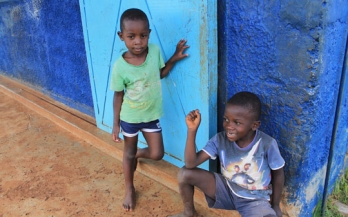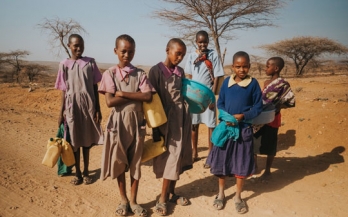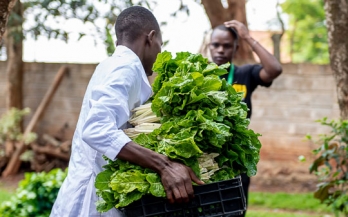


Feeding infants and young children in Vihiga county, Kenya
This policy brief summarises key results from a study designed to identify potential interventions to improve nutrition in infants and young children in Vihiga County, Kenya. The study was commissioned to provide information necessary for the design of appropriate high-impact nutrition interventions in Vihiga to improve nutritional outcomes at the household level.
A pilot case study evaluation of a nutritious food business in Kenya
This is a case study assessment of Chicken Choice, a poultry production and retail business supported by MNF since 2013. Chicken Choise offers small chicken cuts at competitive price points with the aim of making chicken available to lower income groups.
Methods to measure the food environment and a reflection on good practices for engaging the private sector
The following report provides a consolidation of the findings, their implications for the achievements of the Marketplace program to date, and a series of recommendations to strengthen the design and potential for impact of the Marketplace moving forward.
The Kenya national micronutrient survey 2011
This report presents the findings of the Kenya National Micronutrient Survey (KNMS) conducted in 2011 to generate data on the magnitude and distribution of micronutrient malnutrition, including nutritional status and a number of related diseases. The aim of the survey was to establish the prevalence of micronutrient deficiencies, protein-energy malnutrition, and infectious diseases among the Kenyan population.
Major limiting nutrients in complementary diets
Poor quality infant and young child (IYC) diets contribute to chronic under‐nutrition. To design effective IYC nutrition interventions, an understanding of the extent to which realistic food‐based strategies can improve dietary adequacy is required. The objective of this study was to assess the nutrient adequacy of children's diets in two rural agro‐ecological zones of Kenya.
Kenya Food Fortification Summit
Nairobi, Kenya
The workshop will present a platform where the delegates will reflect on the progress made, interrogate the strategies and the arrangements for fortification in place and discuss the way forward to promote the full implementation and sustenance of the Food Fortification programme.
Using implementation research for evidence-based programme development: a case study from Kenya
This supplement contributed to the growing area of implementation research, illustrating the value of systematic research undertaken for the purpose of supporting the design of nutrition interventions that are appropriate for the specific populations in which they are undertaken.
New statistical approach to apportion dietary sources of iodine intake: findings from Kenya, Senegal and India
This study used data from three population-representative surveys of women of reproductive age in Kenya, Senegal and India to develop a new approach to apportion the population Universal Salt Iodization levels by the principal dietary sources of iodine intake, namely native iodine, iodine in processed food salt and iodine in household salt.
1st All Africa Postharvest Congress and Exhibition
- Nairobi, Kenya
The event, whose theme was “Reducing Food Losses and Waste: Sustainable Solutions for Africa”, discussed challenges and opportunities in the postharvest management sector in Africa and developed concrete plans for post-harvest food loss and waste reduction in.